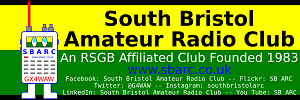GB2BLE Lundy Island DXpedition
Location
This years operation was based at Government House on Lundy Island. The following information will be of interest to Radio Hams:
- Lat/Long: 51.165213°,-4.664307°
- IARU IO71qd
- IOTA EU-120 (English Coastal Islands)
- WAB (Worked All Britain) SS14 England
- North Light: NATS (Navigational Aid to Shipping)/ALLRN (Admiralty List of Lights Reference Number) A5616
- Old Light: NATS (Navigational Aid to Shipping)/ALLRN (Admiralty List of Lights Reference Number) A5617 (Not Operational)
- South Light: NATS (Navigational Aid to Shipping)/ALLRN (Admiralty List of Lights Reference Number) A5618
- Jetty Head: NATS (Navigational Aid to Shipping)/ALLRN (Admiralty List of Lights Reference Number) A5619
- WWFF (The World Wide Flora and Fauna Programme) GFF-103
The Team
This years team comprises:
- Peter G0DRX;
- Matt G0ECM;
- Julia SWL;
- Steve G0UQT;
- Andy G7KNA; and
- Henryk M0HTB
We are staying at Government House, which despite appearances is actually one of the most recent properties to be constructed on the island.
There is the usual mix of equipment planned for this year:
Main HF Station (SSB)
- Yaesu FT-950 HF/6m multi-mode transceiver (G0ECM)
- MFJ-949E Versa Tuner II DeLuxe (G0DRX) – this gets used in bypass mode as an SWR Meter
- SGC SG-237 auto ATU (G0DRX)
- Watson Power Max 25 NF switch mode power supply (G0ECM)
Secondary HF Station (Data – PSK31)
- Yaesu FT-857D HF/6m/2m/70cm multi-mode transceiver (G7KNA)
- LDG Z-11 Pro Mk1 auto ATU (G7KNA)
- Diamond SX-600 SWR/power meter (G7KNA)
- Watson Power Mite 22 NF switch mode power supply (G7KNA)
- Signalink USB Data Interface (M0HTB)
- MacBook Pro (G0UQT)
VHF Station
- Yaesu FT-817 (M0HTB)
- Telescopic Multi Band HF/VHF Antenna on Mag Mount (M0HTB)
- Watson Power Mite 22 NF switch mode power supply (M0HTB)
Antennas
Antennas were to form something of a theme for this years DXpedition, we worked with: a loop fed through the SGC auto-tuner, a long wire configuration, a vertical, a half size G5RV and a multi-band delta loop constructed on the island.
Saturday 16 July 2012
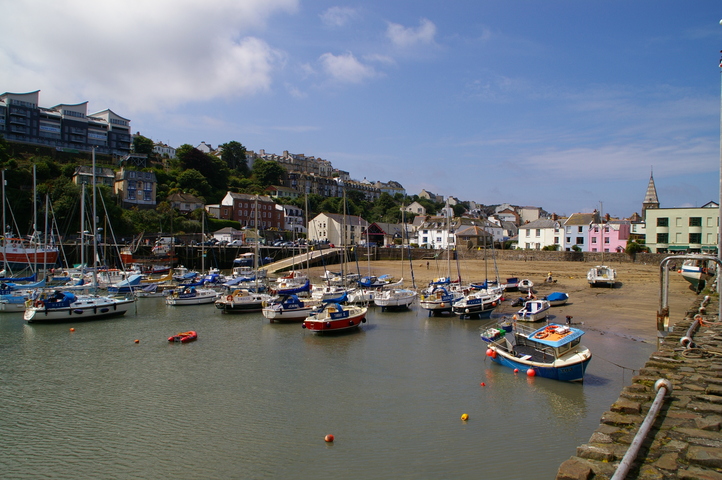

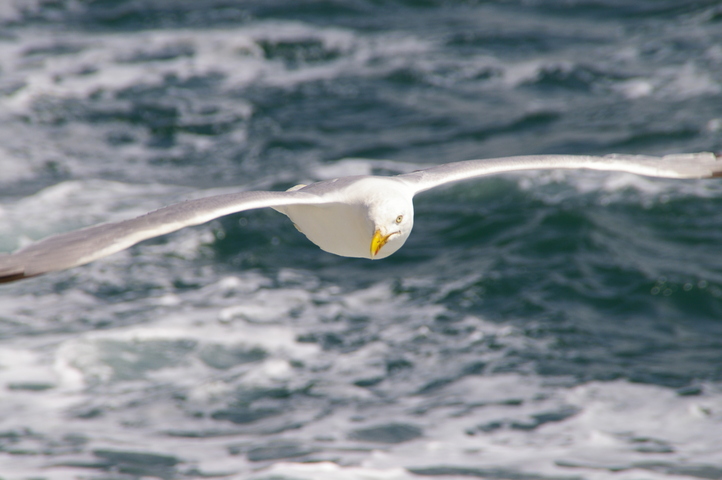

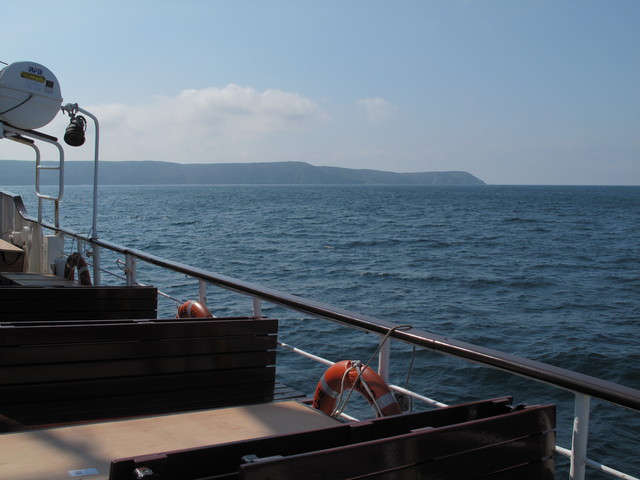
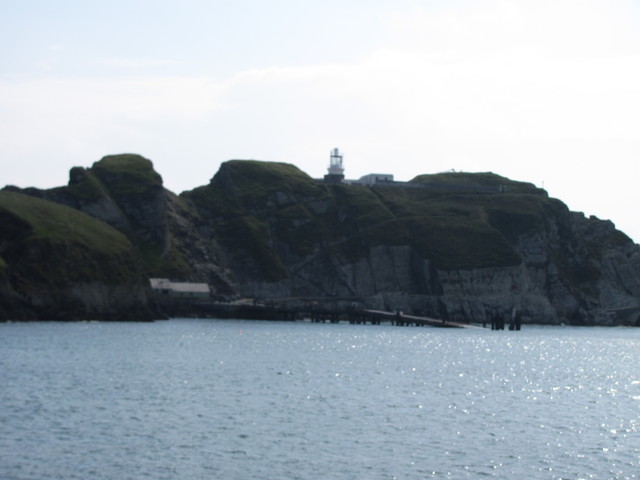

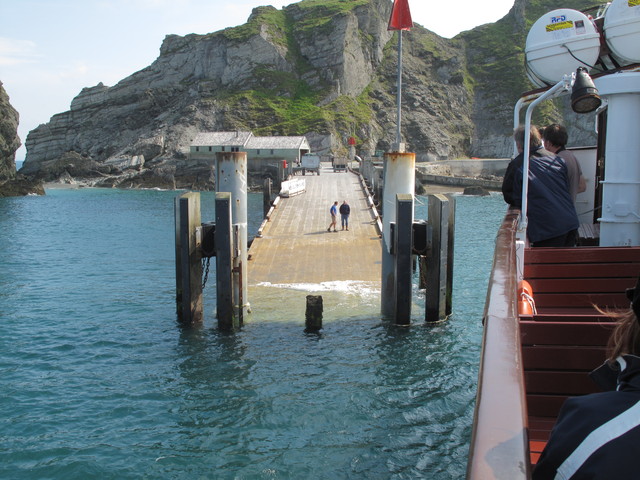

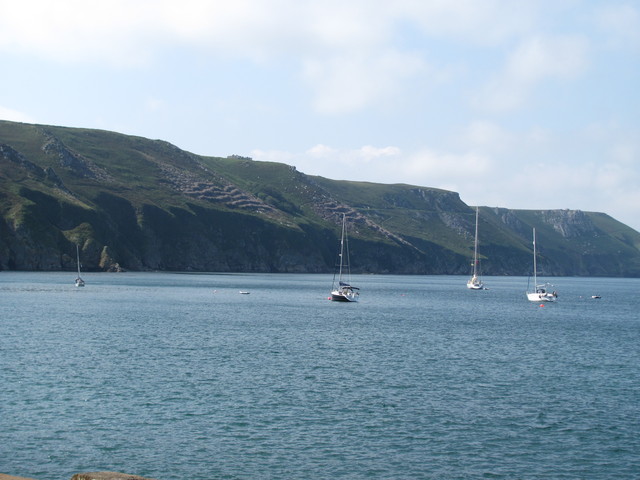
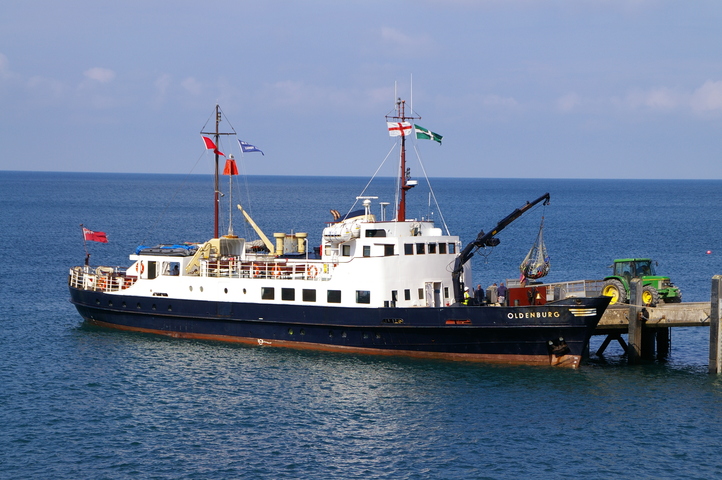

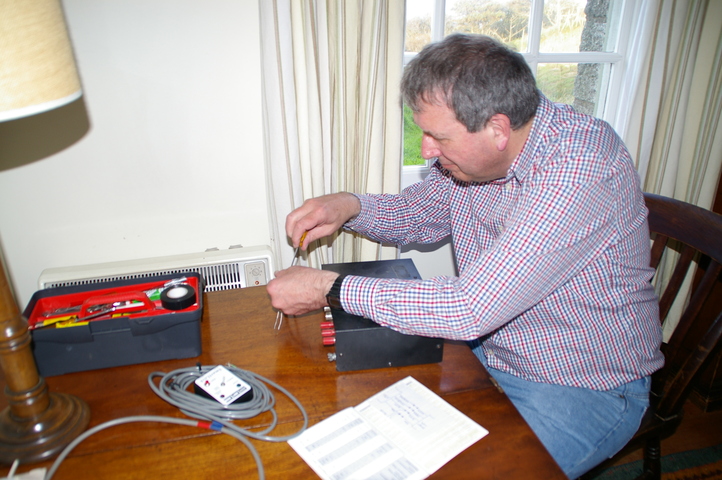

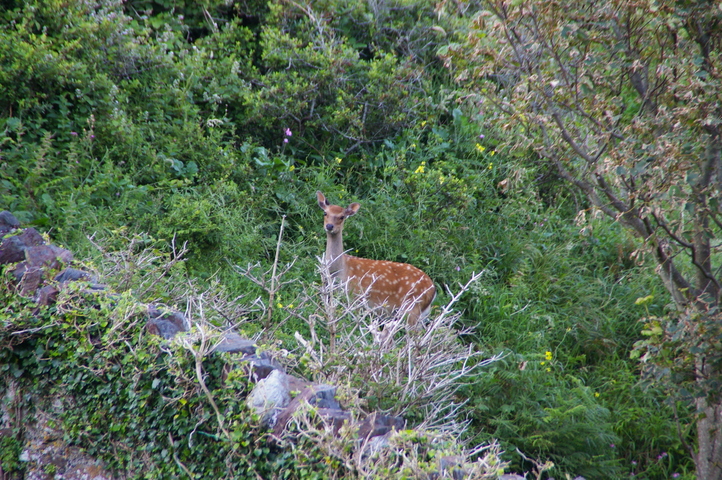
We left the Bristol area about 09:30 this morning, leaving plenty of time to get to Ilfracombe for the sailing at 15:00. A few slight problems on the way down occurred when the "Engine Malfunction" warning light came on in the mini-bus. Fortunately stopping and restarting allowed the fault to clear (sounds like a Windows PC which you occasionally have to turn on and off to clear a random fault), although Geoff our driver reported that the mini-bus was down on power and had limited acceleration, clearly the case that a patch to the ECU has introduced a fault and slowed down overall system performance – now where have we seen that before…
We crossed over with Brian (G4CIB) and his wife Leta (G4RHK) at Ilfracombe. They were leaving the island after spending a week in Government House to celebrate a friends wedding anniversary and Brian’s birthday.
The crossing, after lunch in Ilfracombe went well, not too lumpy. There were a number of good photo opportunities and Henryk (M0HTB) achieved a personal ambition to get a close up photograph of a seagull in flight – or at least thought he did.
Landing and registering meant that we were comfortably ensconced in Government House by 18:00 or so. After a brief trip to the Marisco Tavern for a drink and a bite to eat we set up both the main HF station, the data station as well as a secondary station using a FT-817 so a very strong radio presence this year.
Antennas will have to wait until tomorrow for a more permanent solution, tests were carried out using random wires and mobile whips to make sure everything was at least set up and connected correctly. So a day of antenna building is the order of the day tomorrow.
Oh and Henryks photos – well he managed to forget to put a memory card in his camera so all of the photos from this morning turned out blank.
Sunday 15 July 2012
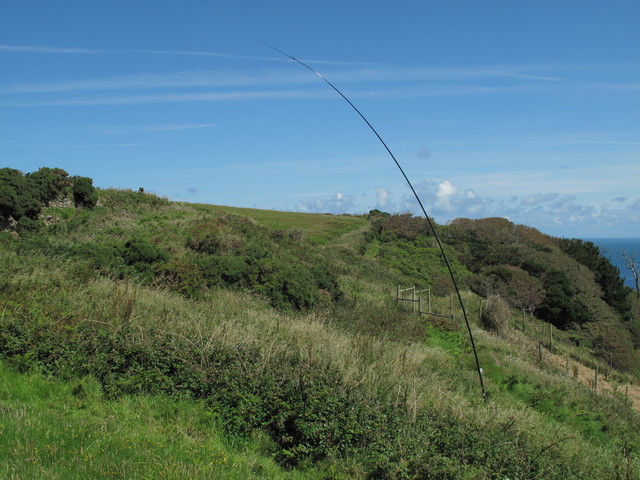

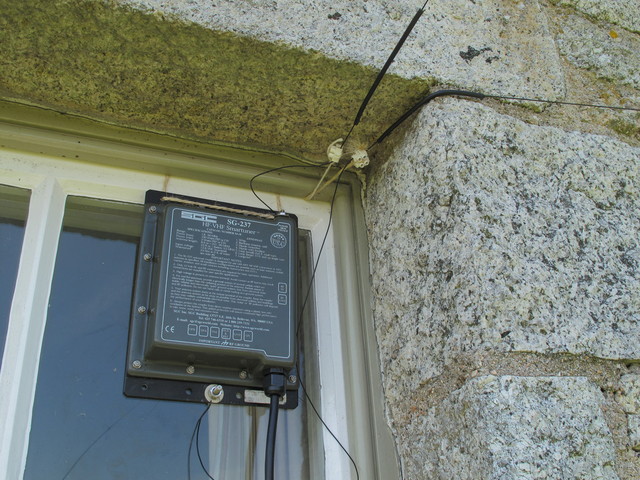

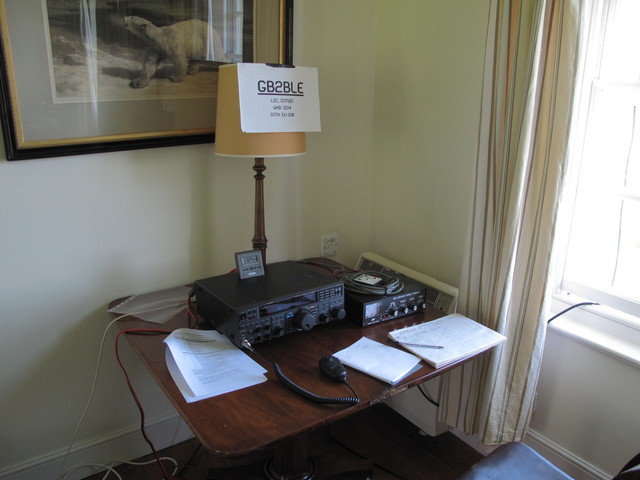
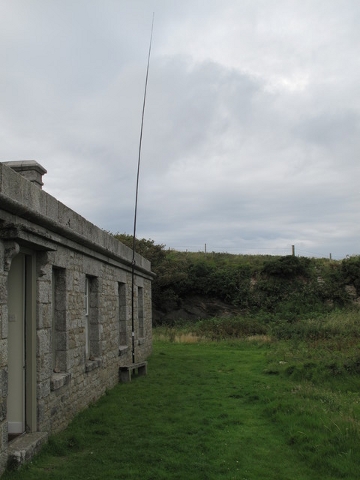
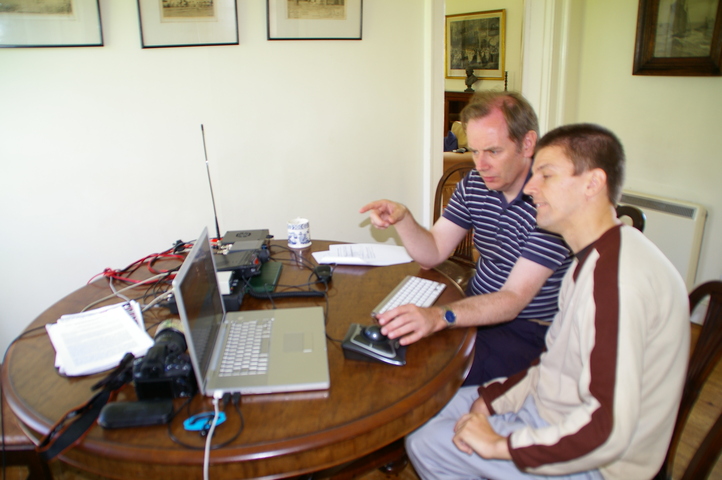

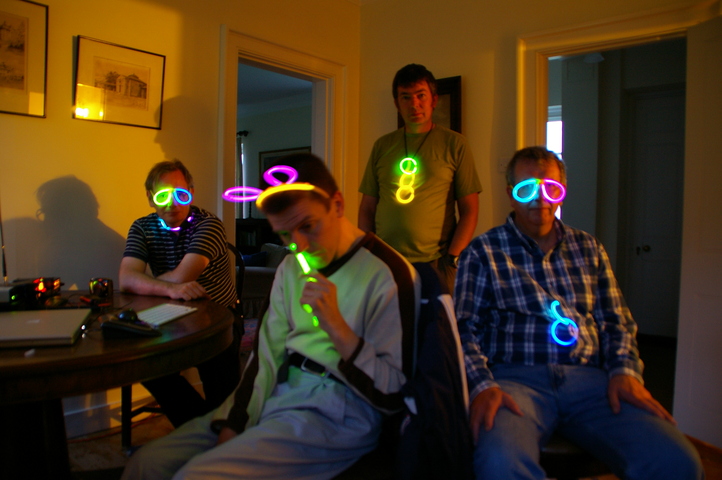
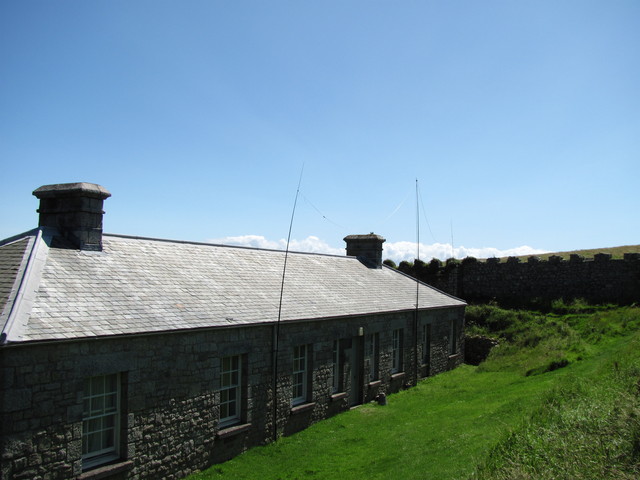

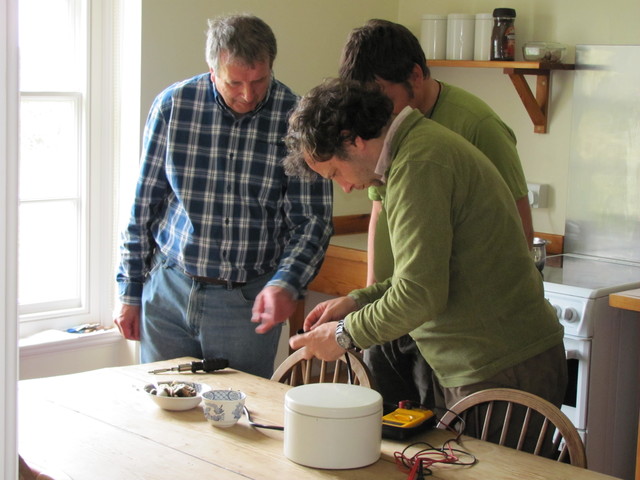
Another bright and sunny day. The wind is strong if you're standing still or in exposed parts of the island (which is more or less everywhere on the island), but if you're walking then it's quite warm.
Antennas go up properly this morning. The main station gets a large horizontal loop with a bit of help from a 10m roach pole. The data station goes with a half size G5RV. It had been thought that there would have to be an antenna construction period this morning as Andy (G7KNA) had misplaced both his 30m half wave dipole and the aforementioned half size G5RV, but thanks to a thorough search of the garage on Friday night before leaving he managed to find both missing antennas.
Had it not been possible to locate these old stand-bys then the plan was to construct a multi-band delta loop, and as all of the parts to do this except for some form of housing for the band switching box were available and brought to the island this antenna may yet see the light of day.
The main HF station went through a series of changes over the day as we tried to get to grips with an excessive noise floor on all of the HF bands, something that the data station was not suffering from to the same extent.
First the loop was converted into a long wire and then into a vertical all of which seemed to radiate reasonably, although the long wire wouldn't load up on 160m or 80m. The vertical was adopted for now but further diagnostics traced the noise problem too a mains extension lead with a switch mode power supply plugged into it that was sharing a double wall socket with the switch mode supply that the main rig was using.
Removal of the offending extension lead brought the noise floor down to more manageable levels but it does mean that the FT-817 that was acting as our VHF base station for island coverage has had to be shut down for now. Alternative arrangements for this were straightforward, using a socket in the hall and routing the extension lead along the opposite end of the lounge.
Matt (G0ECM) has a new toy this year in the shape of a Yaesu VX8 with the GPS attachment. He has managed to use APRS with this and GB2BLE was gradually propagated around the APRS network.
More success in terms of problem solving or fault finding occurred when to our horror it was discovered that the kettle was broken. With the number of engineers and radio hams the kettle was swiftly dismantled and the bad connection made good so that supplies of tea and coffee could continue to flow on a regular basis.
Despite the reduced noise floor the bands seem to be very quiet although the data station managed to work into Rio and South Africa.
Monday 16 July 2012
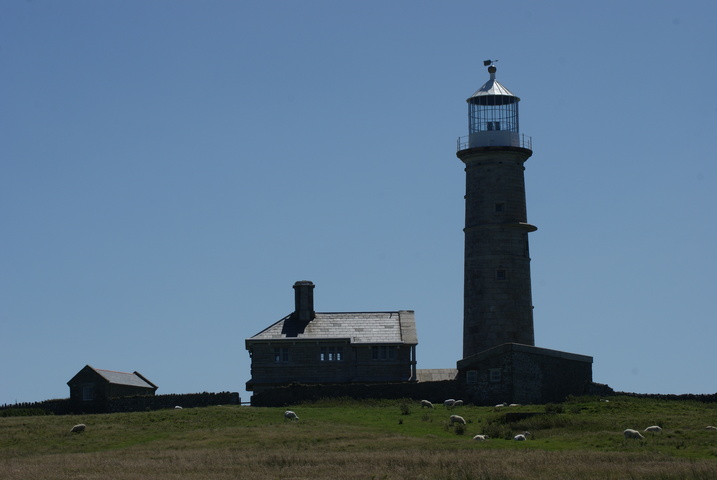

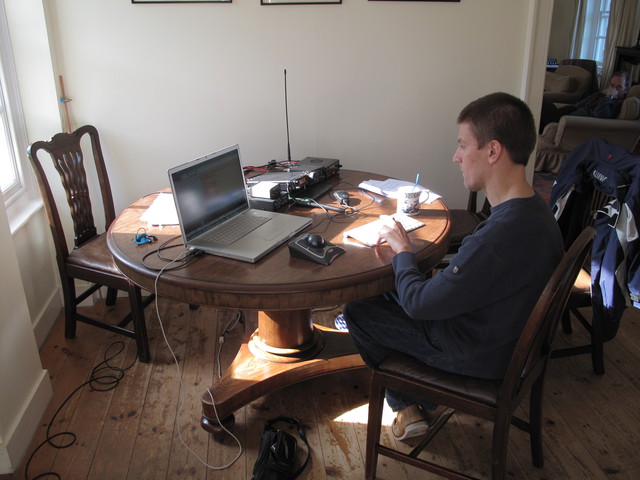

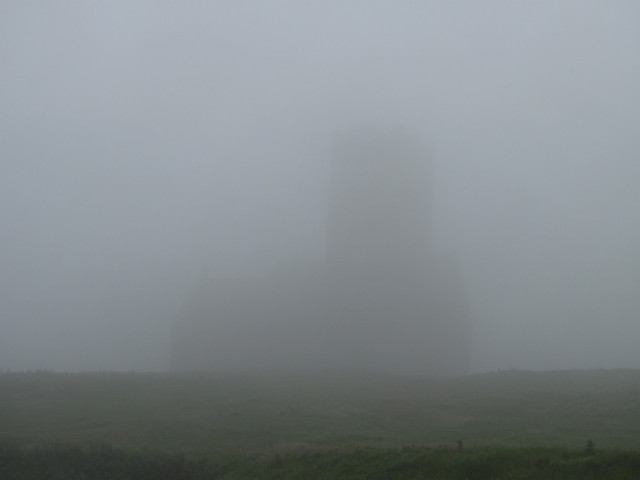
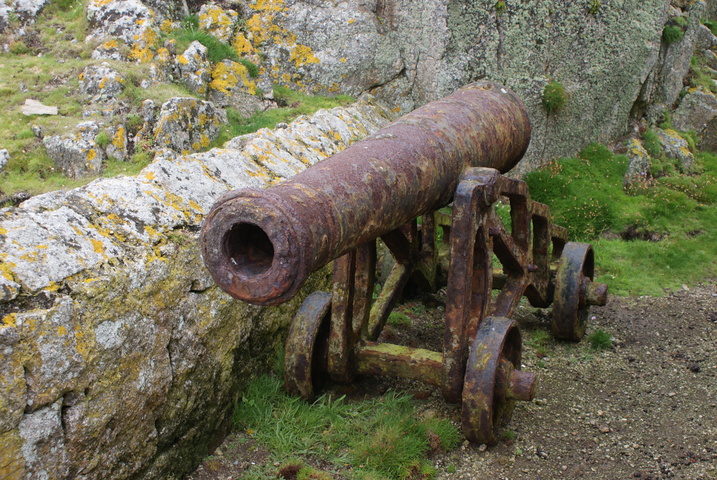

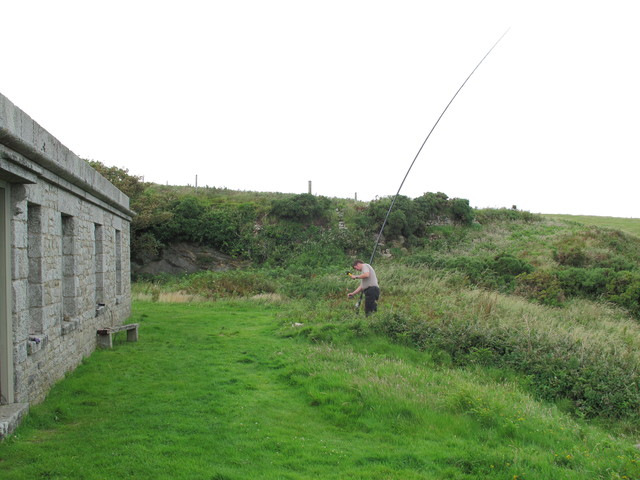

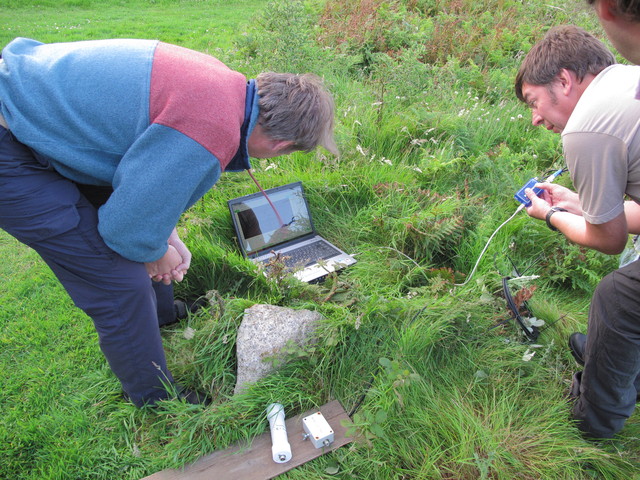
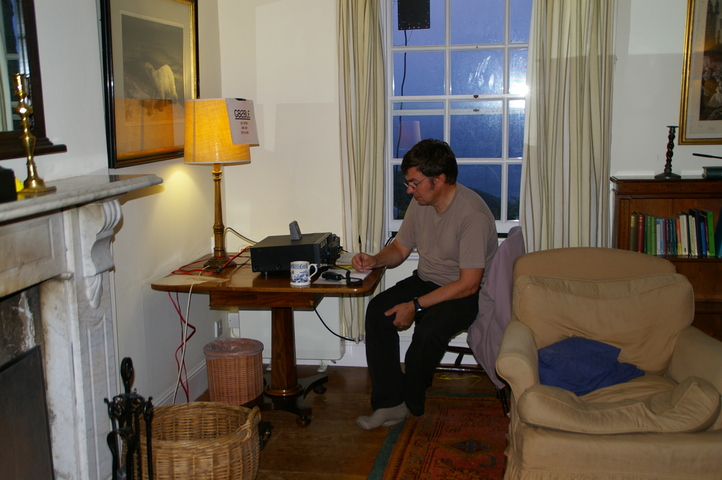

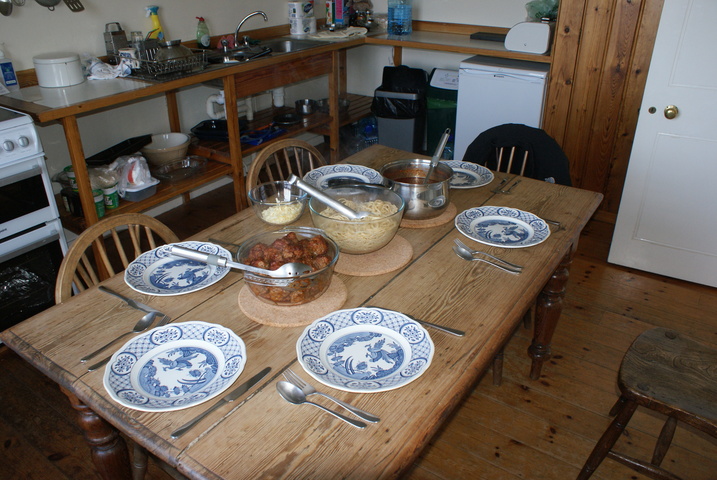

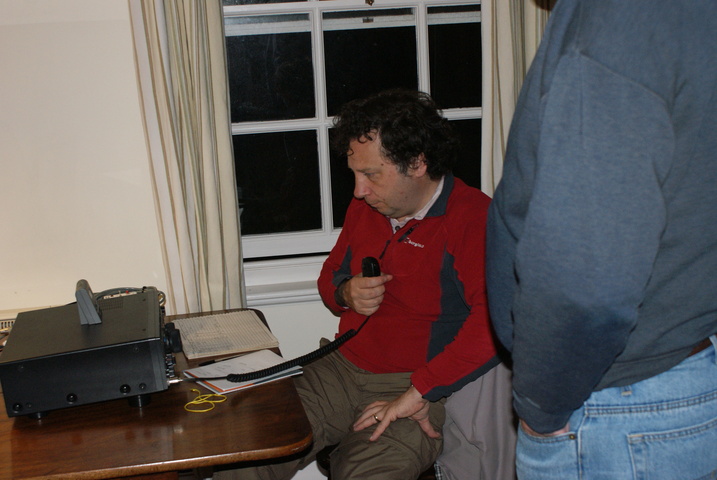
So this morning has dawned windy with the threat of showers although initially the conditions are mainly mizzle.
We have clearly selected the wrong mobile network for our club feeds. Andy (G7KNA), the current club secretary, uses the 3 network which on the mainland offers reasonable coverage allowing TWEETS on the club channel (@G4WAW). He also has the Lundy DXpedition channel (@GB2BLE) through his 'phone but since being on the island there hasn't been any 3G data coverage to be found so the number of TWEETS and indeed E-Mails or website updates have been reduced to zero.
A trip to the top of the Old Light this morning, the highest point on the island, still failed to generate any 3G coverage. A sniff for Wi-Fi did show some open hot spots on the mainland but the signal strength was too low for a reliable connection. Clearly either a change of service provider is required or possibly a high gain 2.4GHz Wi-Fi antenna. This latter is perhaps a more interesting proposition for a group of radio amateurs especially as other networks are not much better than 3.
So more antenna modifications to the SSB station are the order of the day. We're still not convinced that the noise floor is as low as we would have expected it to be. After some further research we have concluded that the vertical was too close to the house and was picking up mains noise.
The vertical was moved away from the house by a few metres and the wire taped to the roach pole. The surplus wire was then coiled to form a base loading coil, peaked thanks to the use of an antenna analyser.
The initial results were very promising, with the noise floor now down to acceptable levels and the ability to tune everything from 80m – 6m using the FT-950s internal ATU. We were rewarded with a QSO into VK7 Tasmania that evening. We jokingly decided that as that was probably the best we were going to get we could now pack everything up and go home early!
Naturally we didn't follow this suggestion as both Henryk (M0HTB) and Peter (G0DRX) planned to get up early in the morning as soon as the power came back on on Tuesday morning.
Tuesday 17 July 2012
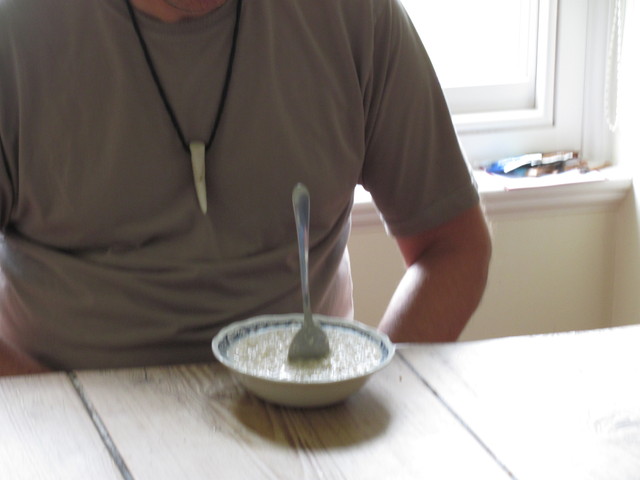

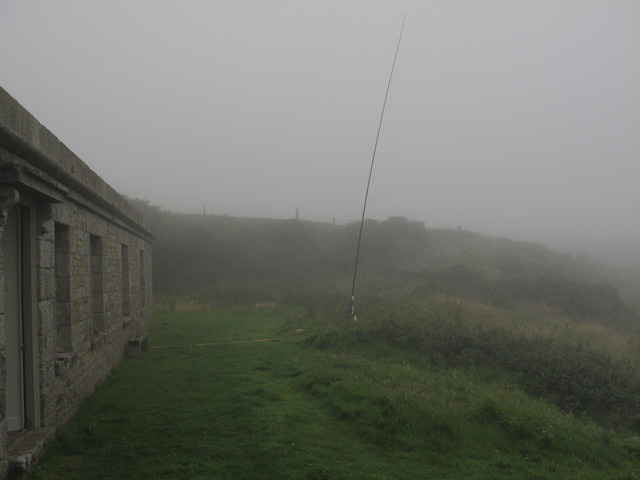

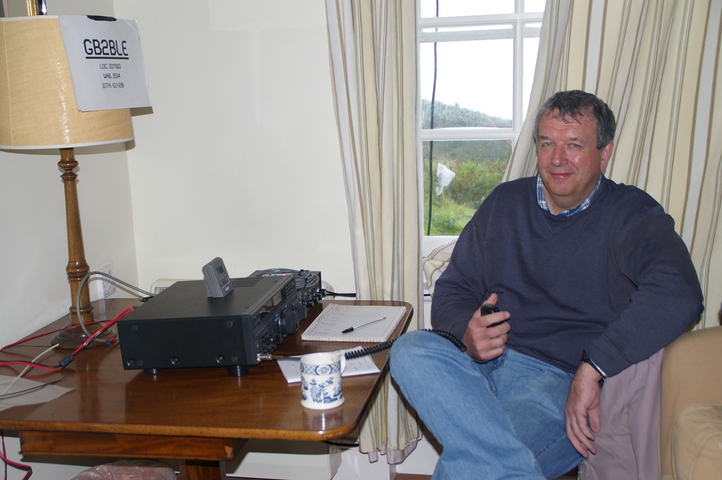
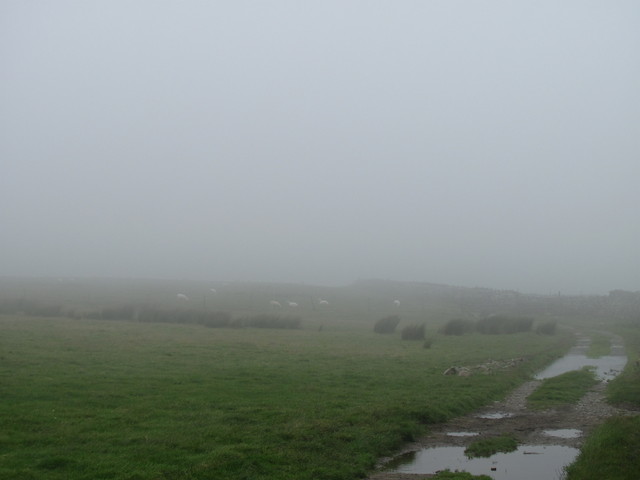

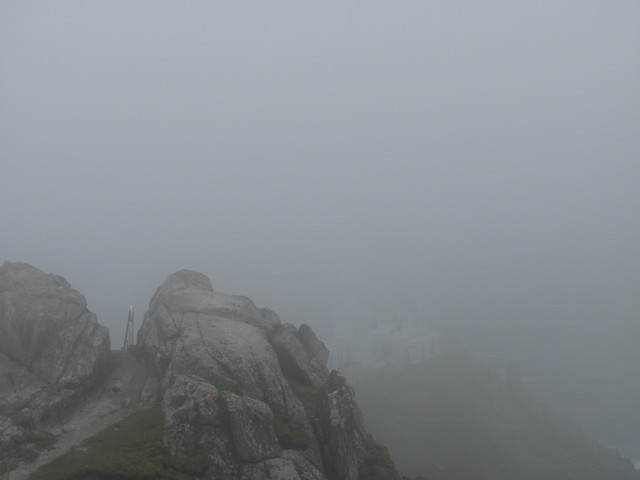

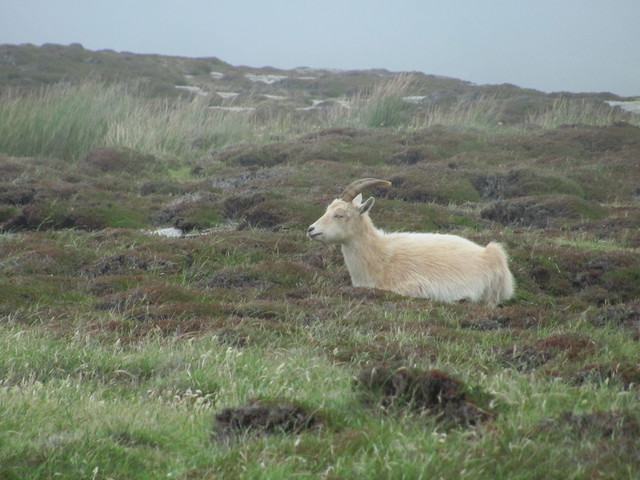
Predictably following the high of the VK7 yesterday nothing came close today, despite Peter (G0DRX) and Henryk (M0HTB) getting back on air as soon practical once the power came back on at 06:00. That's not to say that we didn't make any contacts, but that they were not as exciting.
A few experiments with 6m have been going on throughout the week so far. A little inconclusive for the moment we have found that 6m performance from hand-helds leaves something to be desired. We've been having skeds with G0XCF and trying longer distances on 6m. These have shown that Peters VX5 does not receive too well on 6m using just the set top antenna and that a simple half wave dipole put up in a very compromised arrangement out performs the 10m vertical on 6m even when the latter is matched using the FT-950s internal ATU.
Todays weather has not been good, the fog came in earlier than yesterday and didn't really clear all day. The wind has dropped from yesterday which is a bonus allowing the data stations half size G5RV to be put back to full height. Some minor antenna maintenance saw the addition of a bit of packing between the gutter and the roach poles holding this antenna to prevent damage to the roach poles from rubbing against the metal gutters.
We saw some mizzley squally rain in the afternoon to increase the already saturated topsoil moisture content.
We had a nice QSO with Tuckr (M3TUC) in Carlisle who was bemoaning the weird propagation that we are currently experiencing, he had tried several QSOs on 40m today and every time he established contact the other station would disappear into the noise. Whilst we weren't having quite the same problems we would have to concur that the band conditions do seem to be in a state of flux at the moment.
The data station, manned by Steve (G0UQT), managed a PSK31 contact with Washington DC which was probably the best DX of the day. There were a few US stations in the waterfall on 20m, most were quite weak but this is the first time we have seen these signals this week.
Our VHF coverage of the island is not up to its normal standard. We haven't bothered to set up a dedicated VHF rig this year, we are relying on a FT-817 and a mag mount antenna stuck to an upturned bucket outside Government House. This is not an optimal solution. Government House is shielded from much of the island by the topography and it is impossible to talk back to our base from the north end of the island. We have considered forming a small metal saddle to hook over the parapet wall to get the antenna up in the air at the very least.
The alternative is that we set up a cross-band repeater at the top of the Old Light but to make it permanent for the week, or at least what remains of the week has implications in terms of security of equipment and questions of how to power it would need to resolved, solar panels even to charge a battery probably aren't going to be very efficient at the moment and the forecast for tomorrow is for worse weather. Of course such an installation requires additional licencing so although technically viable with a bit of thought we couldn't actually have completed the exercise. Actually the solution was simpler than that had we thought about it. On Thursday we were attempting to contact the SBARC and used GB3BC as a fall back if HF failed us. Even our upturned bucket antenna was more than sufficient to reach GB3BC and therefore any handheld on the island would have been able to talk back to Government House via GB3BC but we didn't think of that until quite a bit later in the week and it does seem a bit perverse to have to use a repeater in South Wales to maintain a QSO with a base station less than 2 miles away.
After midnight, when the mains generators are turned off, we ran up the FT-950 with a battery as the power source. There was a significant reduction in noise on all bands, a clear indication that the generators are injecting a certain amount of noise into the mains. Theories abound as to why the data station seems to be less afflicted with this problem than the main HF station. Some seem to think that because the main station has a vertical end fed antenna whilst the data station has a horizontal balanced antenna it is less prone to picking up mains interference, although as others have pointed out the fact that Government House is a bungalow means that the amount of vertical mains wiring is quite small compared to the amount of horizontal ring circuit for sockets and lighting. Ultimately it is felt that the fact that the horizontal data has its feed point well above the house compared to the main station vertical is a factor, and of course the FT-857, although a very competent rig, probably doesn't have the receiver sensitivity that the FT-950 has. Finally, of course, we are running the FT-857 with its volume turned right down and decoding data with a PC whilst the FT-950 main station is being utilised on SSB so any noise is more apparent.
If we come back next year, which is dependant on numbers and interest, then we will probably have to bring a mains filter or two or three or…
Wednesday 18 July 2012
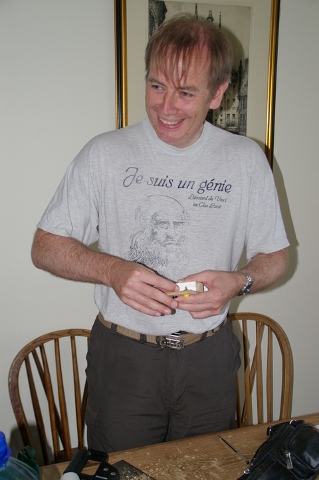
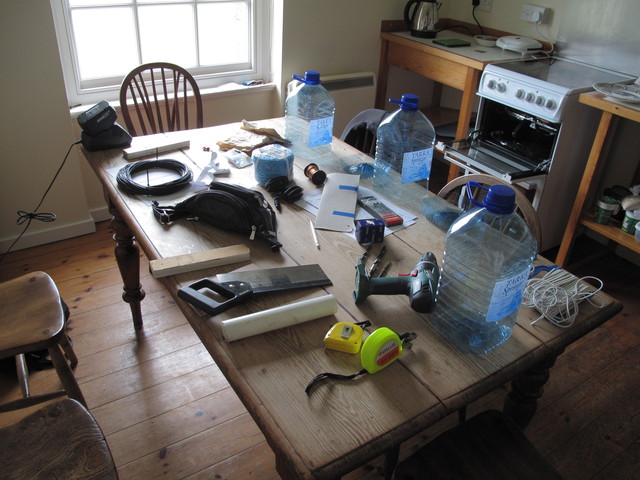

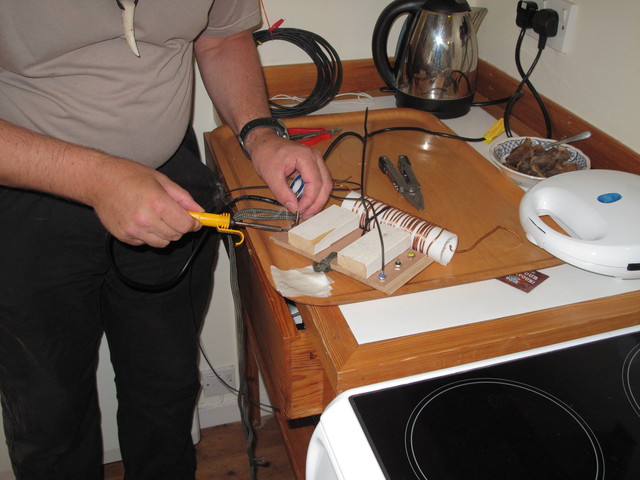
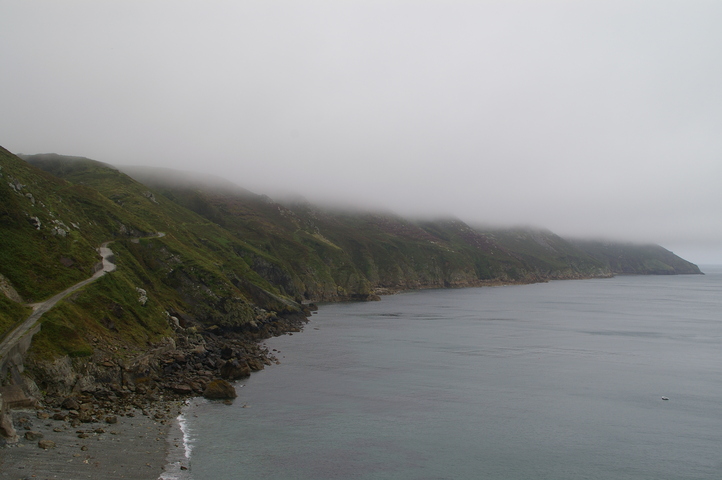

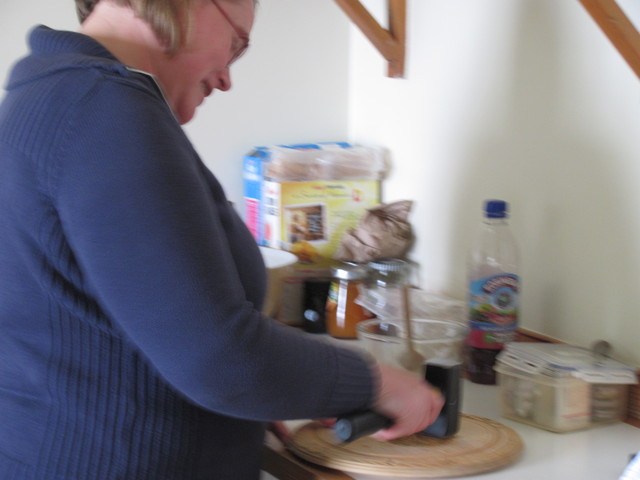
Peter (G0DRX) has tuned around the 20m band this morning and reports that there are perhaps one or two stations on the bands but most of the activity this morning seems to be data on 14.070MHz.
Todays weather seems to be a continuation of yesterdays, the fog is once again covering the island and there is mizzle in the air making it feel both colder and damper than it would otherwise be.
So for something a bit different to do we've had a go at constructing the multi-band mono delta loop using the information in Jose I Calderons (DU1ANV) paper which is in turn based on a January 1987 RadCom article. With the tools and materials at our disposal we quickly constructed the band switching arrangements, falling back on a simple 4mm banana plug and multiple socket arrangements which will require manual intervention but has the benefit of being very simple.,
The plan was to utilise Henryks (M0HTB) antenna analyser to quickly trim it for resonance on the 3 primary bands of 40m, 20m and 30m. However the weather is not in our favour, let's face it when has the weather been in our favour on Lundy this week, and the tuning process is going to have to wait until the rain eases before we can get out and put it up and work reasonably dry. Steve (G0UQT) has just managed to get enough of an Internet connection to be able to check the weather forecast for the remainder of the week, things are going to improve on Saturday – oh joy!
Towards the afternoon, the fog has started to lift and conditions seem to be improving. Enough at least that we can get out and put up the Delta Loop antenna and start the tuning process. There is a certain amount of scepticism amongst the group as to how effective it will be but undeterred we continue forward. Many thoughts come to mind as we form the classic triangle not the least of which is the potential for interactions with the ground and the importance of the distance between the ends of the antennas at the base of the loop.
We tuned the antenna satisfactorily for both 40m and 20m and planned to leave the 30m tuning until tomorrow. However there did seem to be interactions with the ground and replicating the height off the ground for the base of the loop was something that had to be thought out. After a while, rather late in the afternoon we arrived at a geometry that worked well with the roach pole support, was easy to describe and replicate, seemed to provide sufficient separation to avoid interactions with the ground and more over looked quite good and seemed to be reasonably tolerant of the high winds we had been suffering. However this change of shape altered the tuning characteristics, so tomorrow will see us redoing the 40m and 20m tuning before progressing onto the 30m tuning.
Thursday 19 July 2012
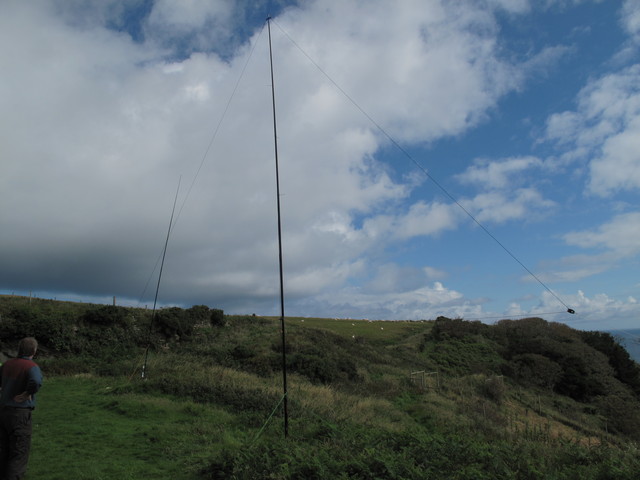

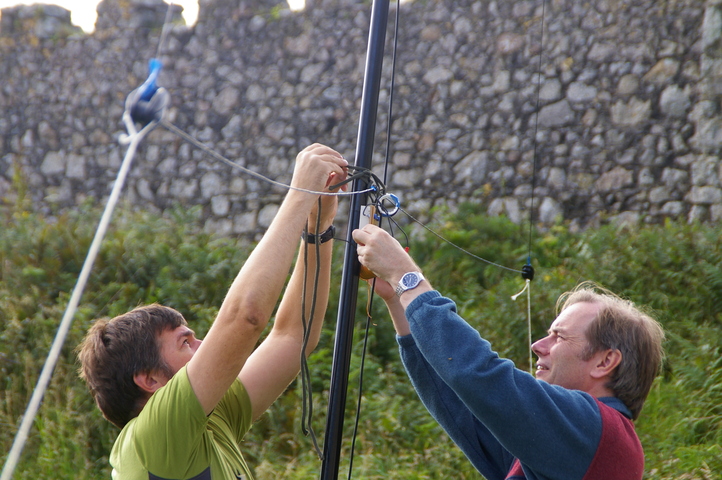

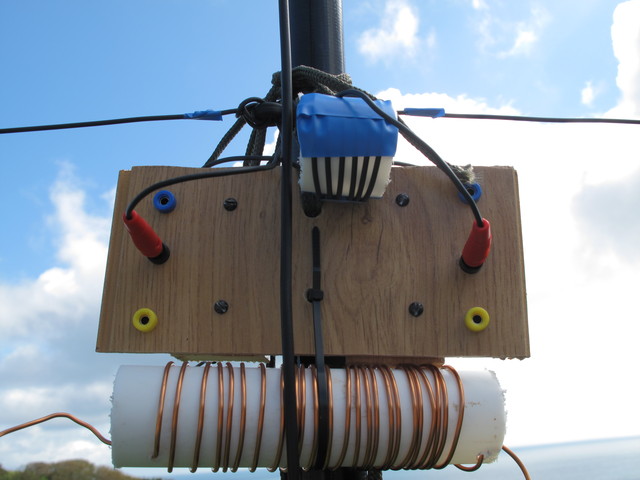
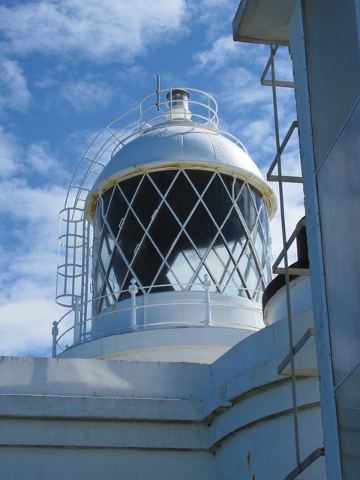
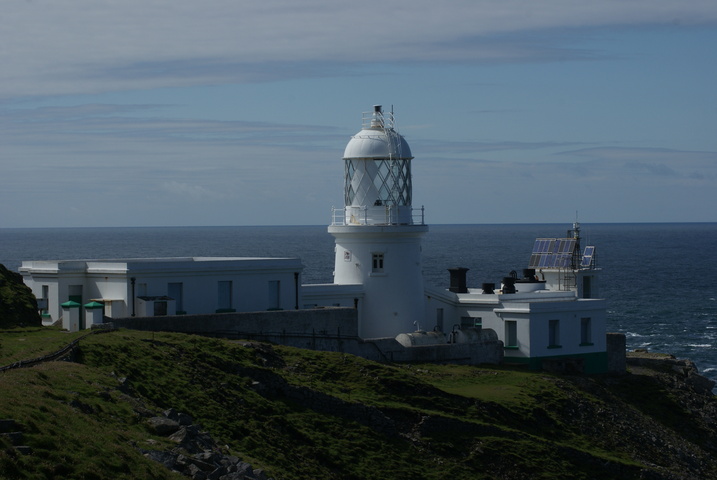

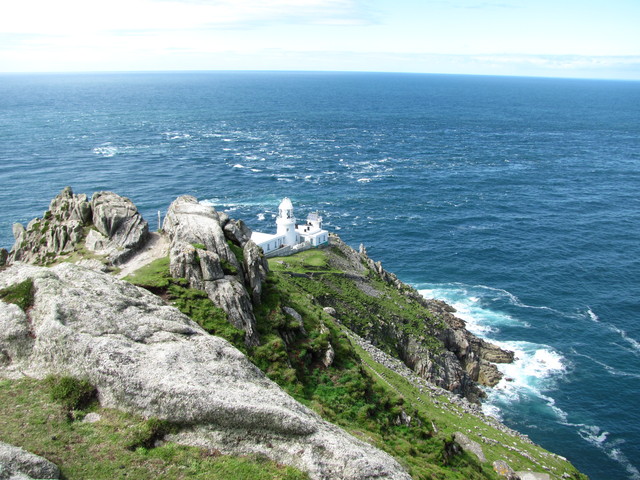
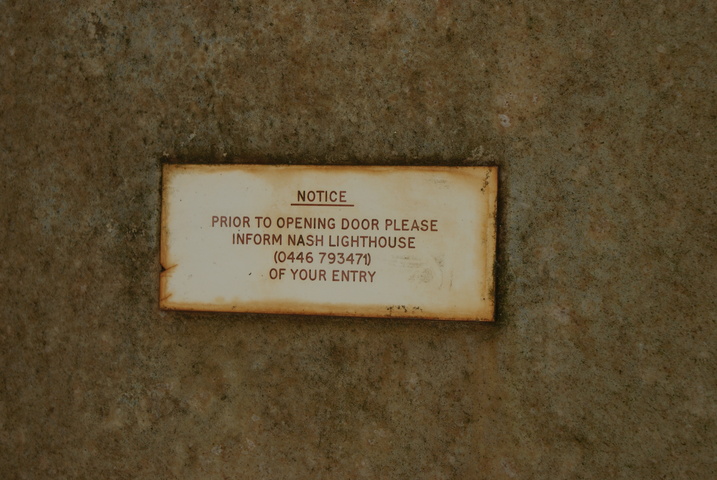

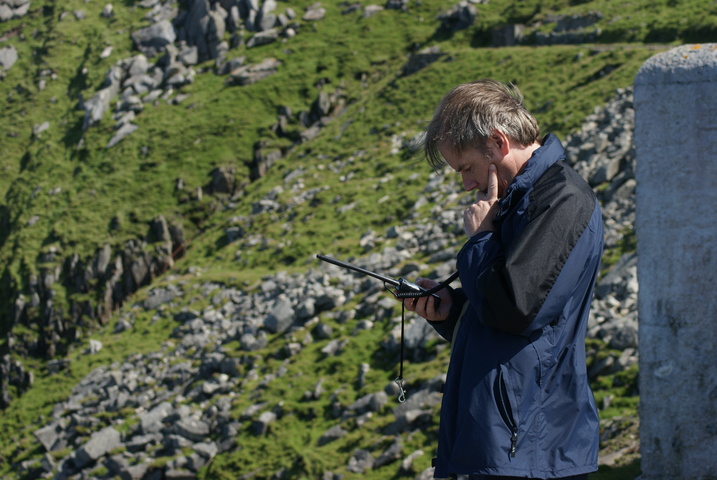
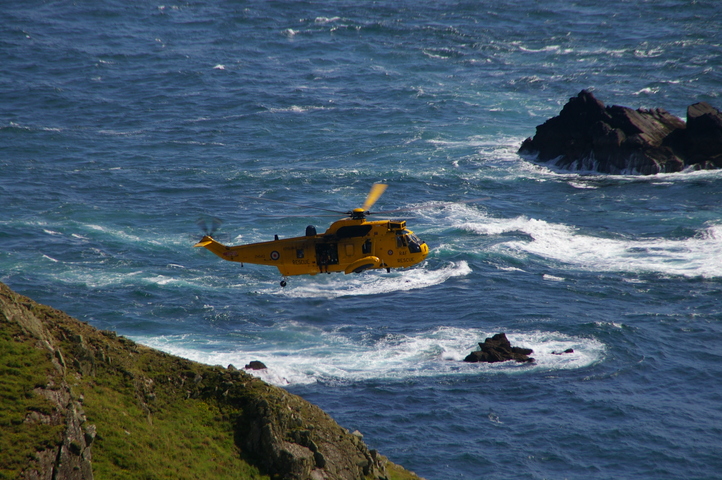

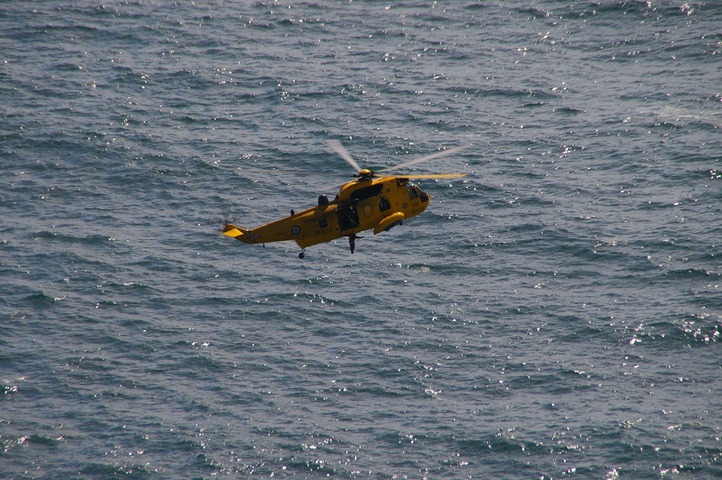

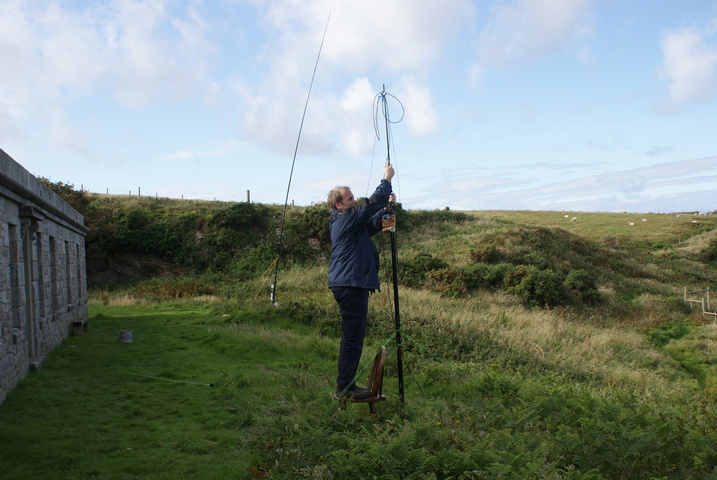
Another fine day, we have reassembled some of the parts of the Delta Loop Antenna and recommenced the tuning process. Both 40m and 20m are adequate giving a SWR of less than 3 across the entire 40m band and even better performance in the 20m configuration. The use of an antenna analyser is showing that there are unexpected resonance points on the upper bands. The original design was for a Delta Loop that would be resonant on 40m, 20m, 30m and 15m. It achieves this by being a half wave folded dipole on 40m, with the ends of the loop terminated into unconnected sockets at the centre base of the loop, this configuration also acts as a 1.5 wave folded dipole on 15m. By linking the ends of the dipole directly together the loop becomes a full wave loop on 20m and by adding an inductance at the base of the loop the antenna can be converted into 30m full wave loop. Other resonances were spotted on 10m.
By lunchtime we have got back to where we were at the end of yesterday, but with the new geometry so once again only 30m remains to be tuned, but as the weather is so good the Antenna building team have decided to go for a walk to see those parts of the island that have been shrouded in fog on previous days.
After dinner we sat down to play radio and contact the South Bristol ARC for our traditional "Contact Lundy" evening, The incomplete Delta Loop antenna was pressed into service on the 40m band with the main station FT-950. Sadly either the skip distance was wrong, or the band conditions were against us or the Delta Loop antenna has a different angle of radiation making it impossible to maintain a contact with the club. However, calling for the club station seemed to attract a lot of attention and we worked a number of other G, M and continental Europe stations, in fact we became the target of a massive pile-up working in excess of 150 contacts in about 3 hours.
Friday 20 July 2012
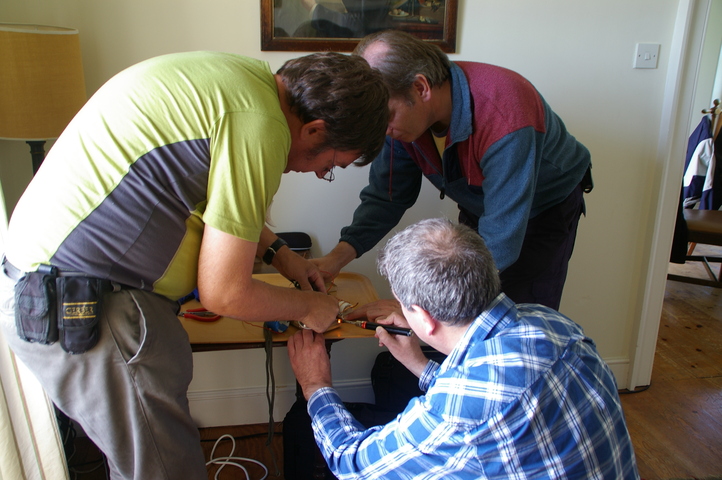

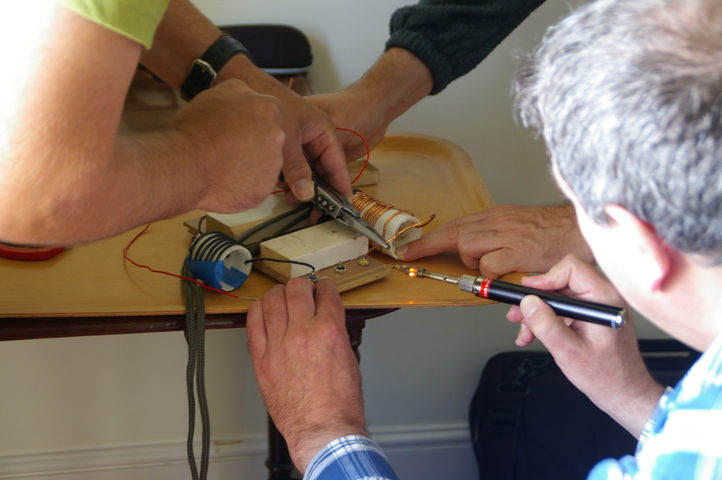

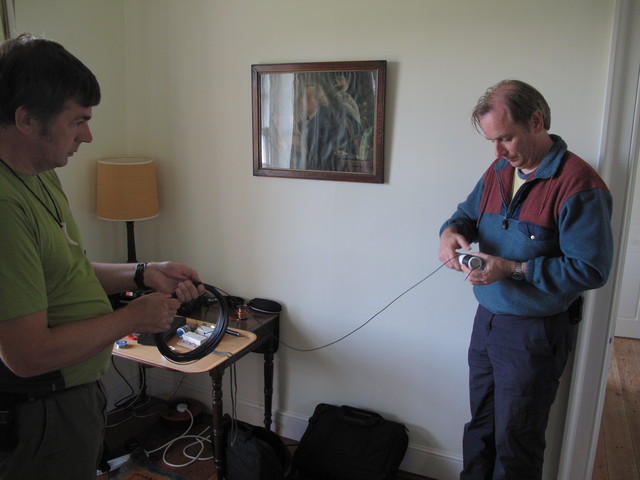
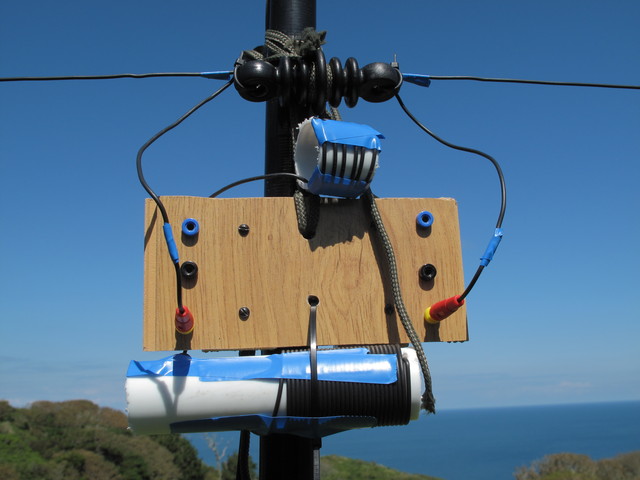

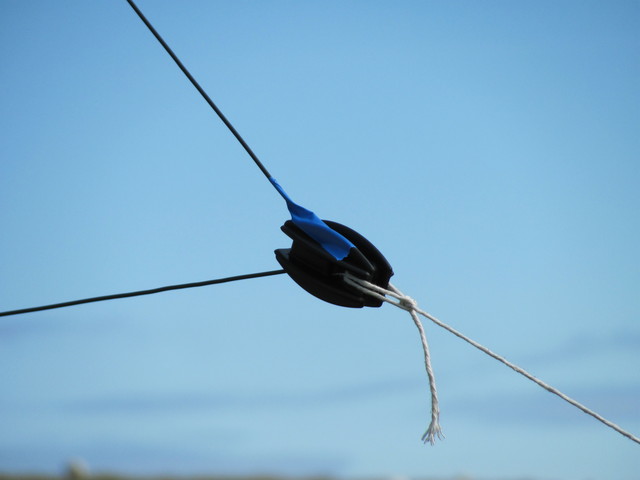

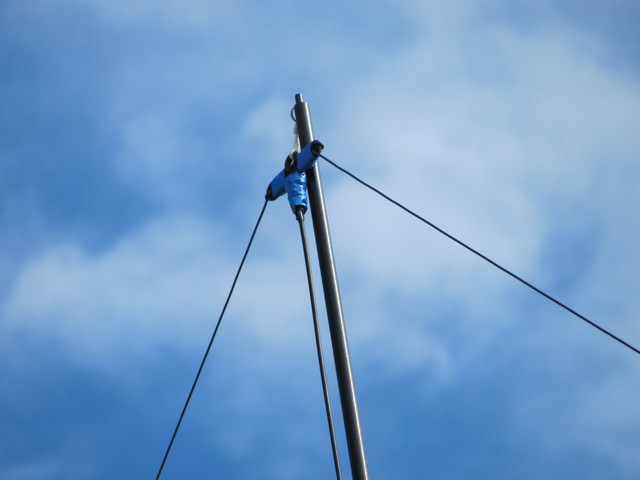
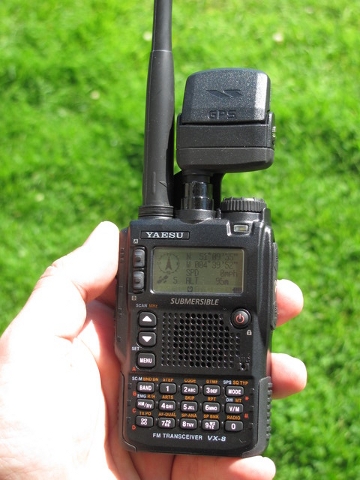
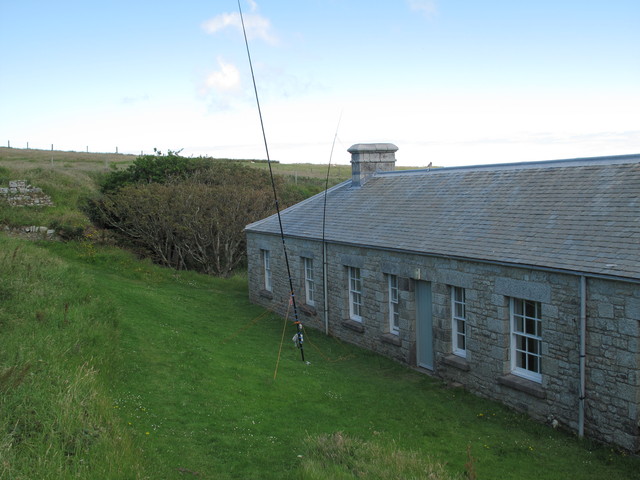

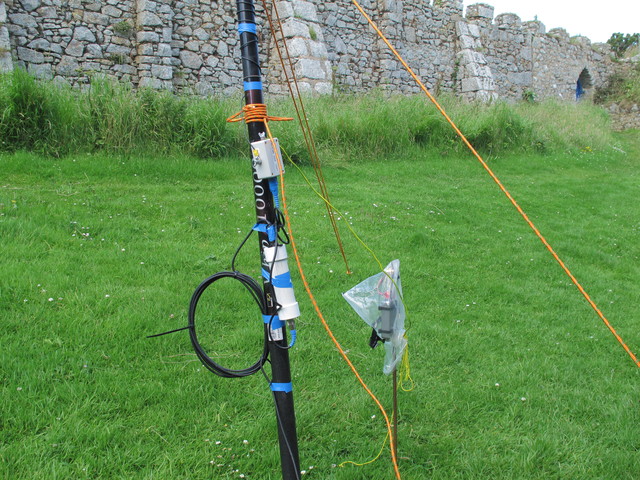
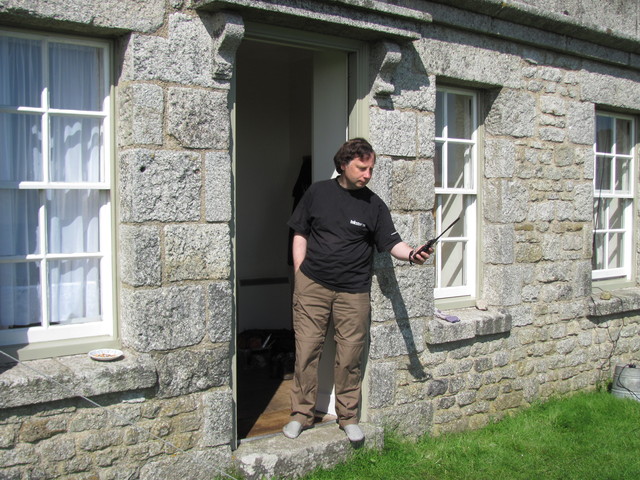

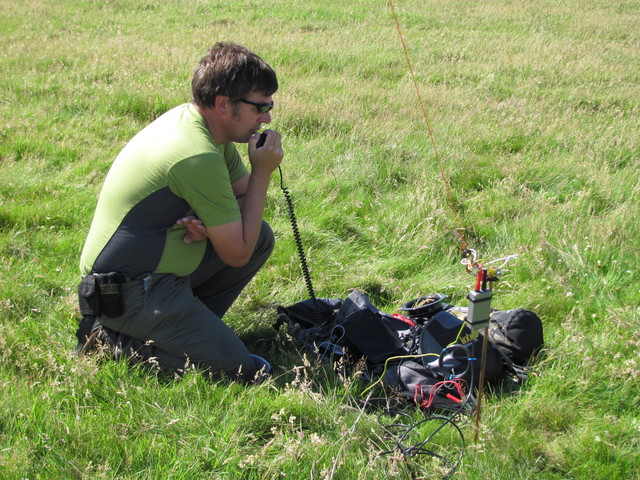
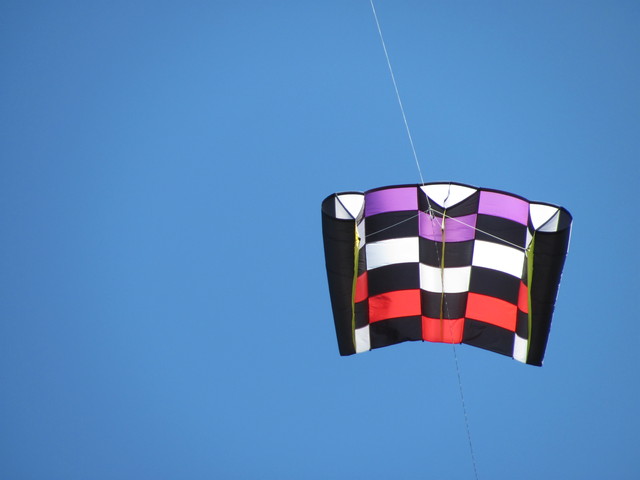

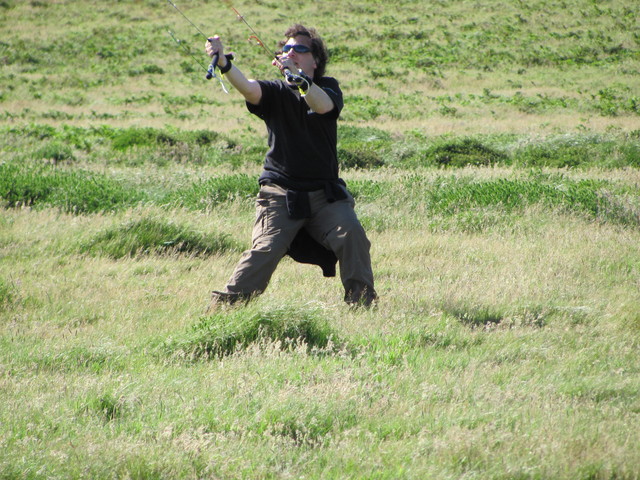

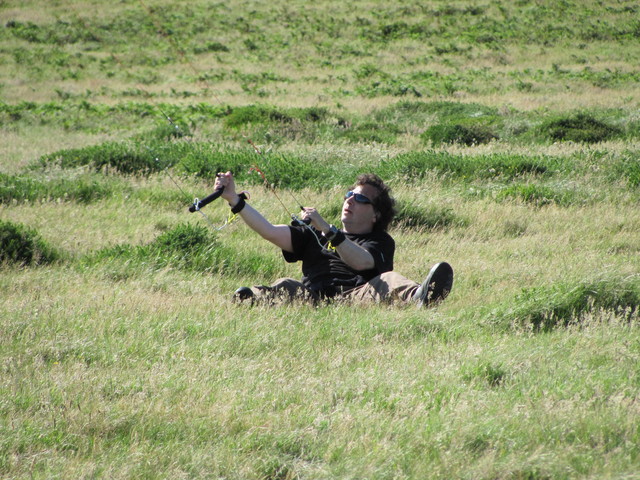
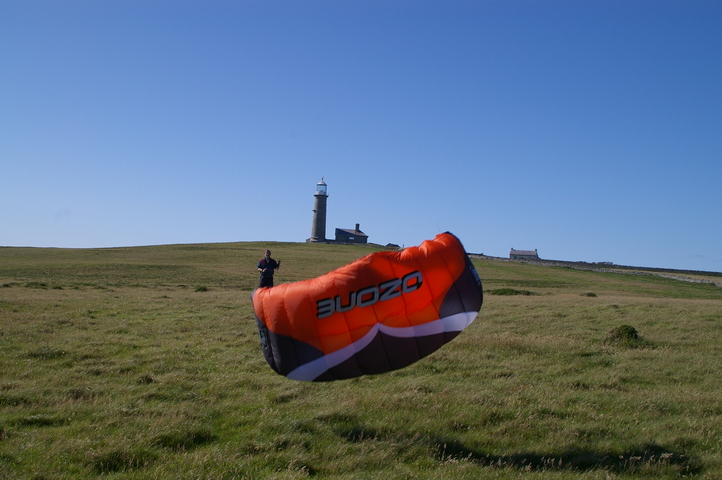

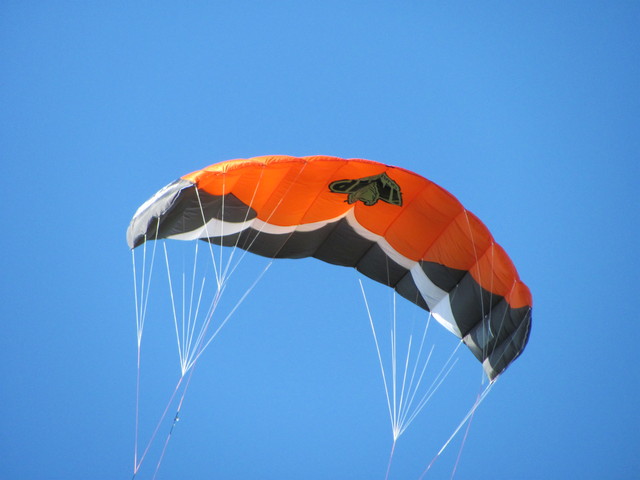

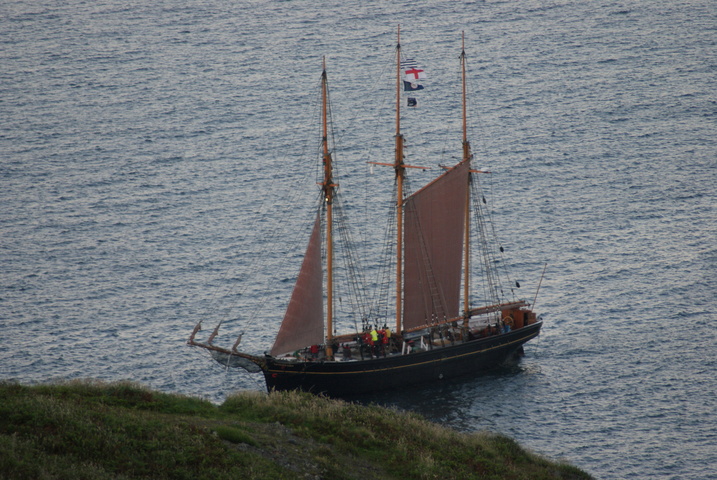
This morning we completed the tuning and setup of the new Delta Loop antenna, we have shown it to be resonant (which is defined as having an SWR of better than 3:1) on the expected or intended bands of 40m, 30m 20m and 15m. As an added bonus we also saw resonance on the 10m band, but unlike all of our other antennas the resonance point in this area wasn't in the 27MHz CB band.
To round off the build we ran an analysis of the resonant points before plugging it in to the FT-857 data station. After clearing the ATUs memories to avoid any confusion with the settings in memory from the half sized G5RV we were away and making contacts on both 30m and 20m.
After lunch we took down a couple of the antennas that were now surplus to requirements and then took Henryks (M0HTB) kites up to the hill near Old Light. Here we set up the sled to hang a long wire to try a bit of QRP operation from a battery powered FT-817, and also had a bit of fun crashing Henryks (M0HTB) traction kite, well Andy (G7KNA) seemed to spend most of the time crashing, Matt (G0ECM) seemed to be more in tune with the controls.
Sadly our QRP operation was rather ineffective with only 1 contact added to the log from the Hebrides. It was however QRP on both ends (both stations using FT-817s) which was a bonus.
More antennas came down as the evening rolled on, with the FT-950 main station being reduced to a 6m listening post attached to a half wave dipole for 6m as the loop, vertical and ATUs were packed away. After dinner it'll be time to remove even that antenna and the Delta Loop to put everything in its packaging for tomorrows departure.
Saturday 21 July 2012
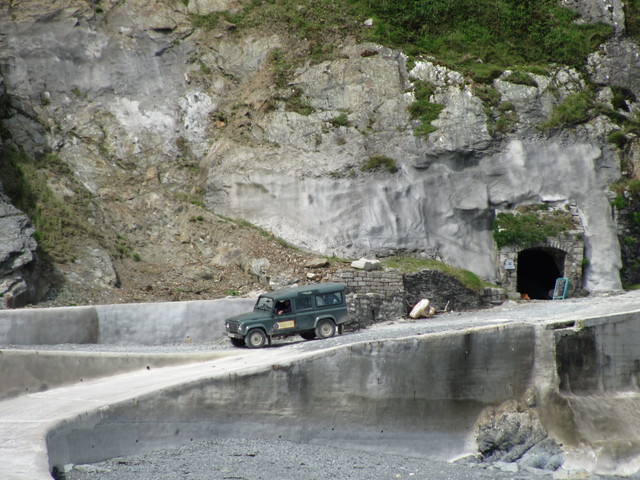

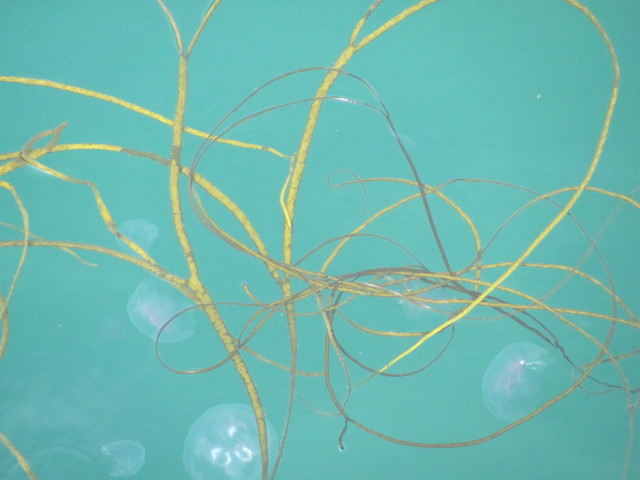

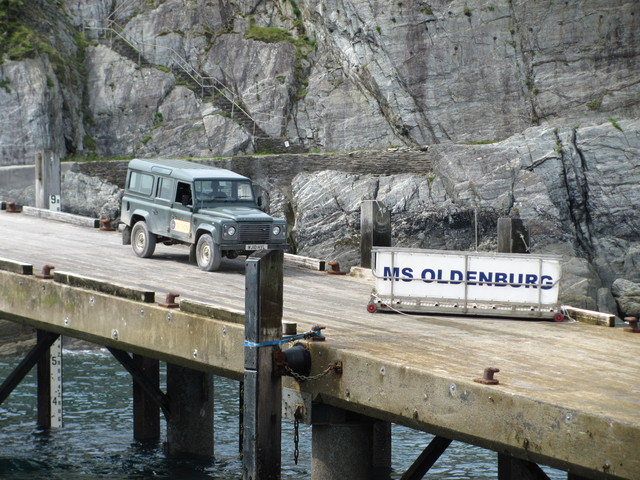
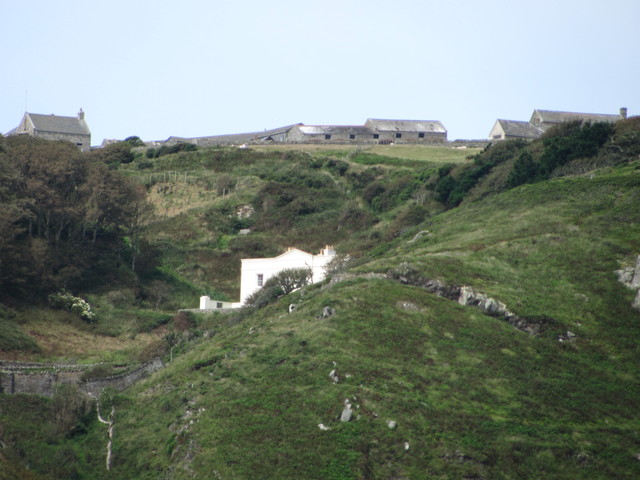

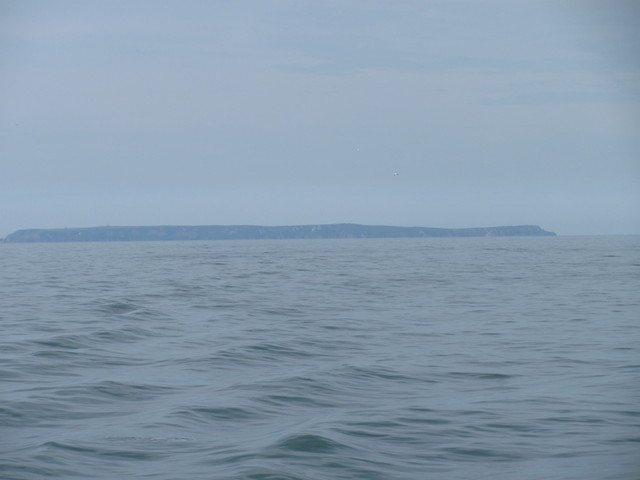

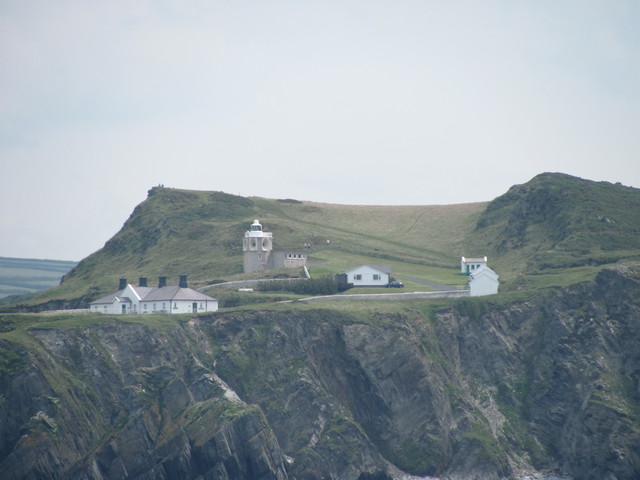
That's it all over again for another year (or perhaps a bit less, we haven't decided on dates for 2013 yet but the consensus seems to be to try for something a little earlier in the year to try to keep costs down) so watch the main Lundy page and our GB2BLE TWITTER feed for more information.
